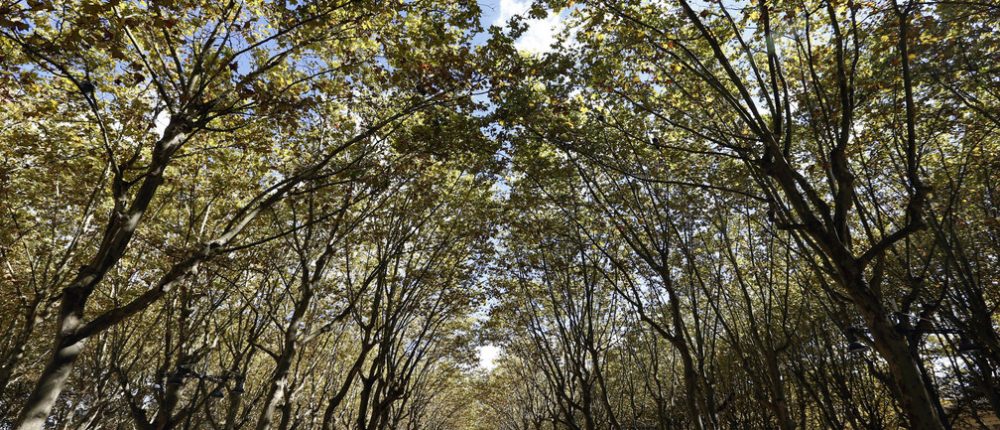How green infrastructure is helping to control urban floods
We have all come across people whose homes have beautiful and always blooming plants and flowers – people with a so-called 'green thumb'.
But did you know that cities too can have a 'green thumb'? Singapore is certainly one of those cities.
Also known as the 'garden city', Singapore is set to become a 'city in a garden'. The abundance of greenery is a striking feature, with parks, green roofs, street side plants, and trees on every corner.
But greenery is not there just to please the eye and create livable public areas — it also helps mitigate the risk of flooding.
Singapore, like many other densely-populated cities, is at risk of flooding. One way to tackle this is by greening public spaces and encouraging private development to follow the principles of the government’s flagship “ABC” program, which looks to make water 'Active, Beautiful and Clean'.
Carefully planned and implemented, investments in so-called 'green infrastructure' are paying off: they make the city more resilient and more sustainable in the long-term, and also create more spaces for people to meet and interact.
Although Singapore’s dedication to greening public spaces is remarkable, it is not the only city that is getting its hands 'dirty' to promote natural ecosystems. The Netherlands has been promoting green approaches in urban planning for many years now, with the innovative redesign of sewer systems, or the creation of multi-functional 'water squares' which can hold storm water when rain is heavy while otherwise serving as a social space.
The idea to retain extra water across many places in a city lies at the heart of the 'Sponge City' program recently launched by China: with many of its rapidly growing cities suffering from chronic floods, 16 cities are piloting measures to hold, clean, and drain water in an ecological manner. China is using this program to explore the cost-effectiveness of different measures and to evaluate opportunities for a nation-wide expansion.
In fact, a common problem for city planners is to quantify the benefits of green approaches. In the US, Portland has seen savings when it stopped relying mostly on large storage tunnels and pipes system and started investing in so-called 'green streets' that can retain water run-off, hence saving on the cost of building and maintaining larger systems.
In Japan, large-scale wetlands were restored under the Maruyama river project near Toyooka city, creating a virtuous cycle of improved natural habitat attracting more visitors and reviving the local economy.
Indeed, people and the local economy are what cities need to keep in mind when planning and investing in urban infrastructure. Cities should strive to create livable spaces where people can work and play, businesses are keen to settle and invest, and which contribute to strengthening the resilience of the physical environment.
Today, there are already many examples of successful green infrastructure investments – let’s hope that these will inspire many other cities to start growing 'green thumbs'.
This post first appeared on the World Bank Sustainable Cities blog.
Written by Zuzana Stanton-Geddes, Operations Analyst, Sustainable Development Department, The World Bank
This article was also published on the Future of Construction Knowledge Sharing Platform and the WEF Agenda Blog.
--Future of Construction 16:04, 16 Jun 2017 (BST)
[edit] Find out more
[edit] Related articles on Designing Buildings Wiki
Featured articles and news
RTPI leader to become new CIOB Chief Executive Officer
Dr Victoria Hills MRTPI, FICE to take over after Caroline Gumble’s departure.
Social and affordable housing, a long term plan for delivery
The “Delivering a Decade of Renewal for Social and Affordable Housing” strategy sets out future path.
A change to adoptive architecture
Effects of global weather warming on architectural detailing, material choice and human interaction.
The proposed publicly owned and backed subsidiary of Homes England, to facilitate new homes.
How big is the problem and what can we do to mitigate the effects?
Overheating guidance and tools for building designers
A number of cool guides to help with the heat.
The UK's Modern Industrial Strategy: A 10 year plan
Previous consultation criticism, current key elements and general support with some persisting reservations.
Building Safety Regulator reforms
New roles, new staff and a new fast track service pave the way for a single construction regulator.
Architectural Technologist CPDs and Communications
CIAT CPD… and how you can do it!
Cooling centres and cool spaces
Managing extreme heat in cities by directing the public to places for heat stress relief and water sources.
Winter gardens: A brief history and warm variations
Extending the season with glass in different forms and terms.
Restoring Great Yarmouth's Winter Gardens
Transforming one of the least sustainable constructions imaginable.
Construction Skills Mission Board launch sector drive
Newly formed government and industry collaboration set strategy for recruiting an additional 100,000 construction workers a year.
New Architects Code comes into effect in September 2025
ARB Architects Code of Conduct and Practice available with ongoing consultation regarding guidance.
Welsh Skills Body (Medr) launches ambitious plan
The new skills body brings together funding and regulation of tertiary education and research for the devolved nation.
Paul Gandy FCIOB announced as next CIOB President
Former Tilbury Douglas CEO takes helm.
UK Infrastructure: A 10 Year Strategy. In brief with reactions
With the National Infrastructure and Service Transformation Authority (NISTA).

























